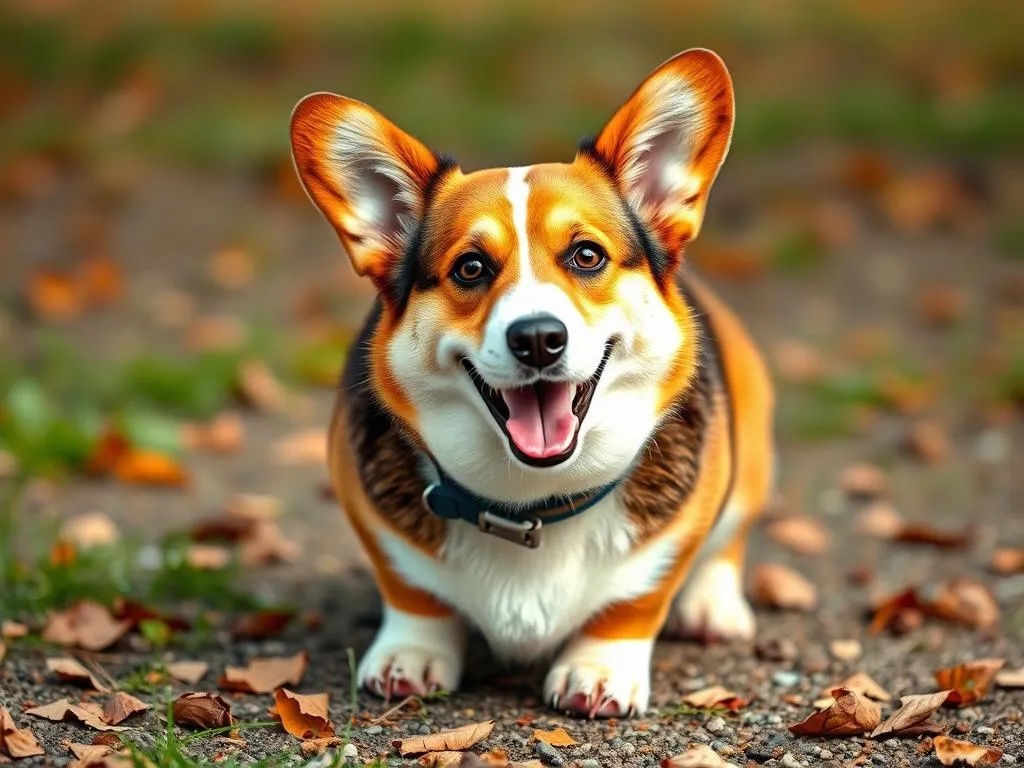
Introduction
Dog breeds come in a delightful variety of shapes, sizes, and personalities, each with their own unique traits that make them special companions. Among these breeds, the Corgi stands out not only for its charm but also for its distinctive physical characteristics, particularly its short legs. This post will delve into the reasons behind the Corgi’s unique leg structure, exploring the genetic and evolutionary factors that have shaped this beloved breed. Understanding these characteristics is essential for prospective dog owners who wish to provide the best care and environment for their furry friends.
Understanding Dog Breeds
Definition of Dog Breeds
A dog breed is a specific lineage of dogs that share common characteristics, including physical traits and behavioral tendencies. These traits are often passed down through generations, leading to the distinct appearances and temperaments we associate with various breeds. Understanding breed characteristics is crucial for potential owners, as it can significantly influence training, care, and lifestyle choices.
Classification of Dog Breeds
Dog breeds are generally classified into several groups based on their historical roles and physical traits. Some of the major classifications include:
- Working: Breeds like the Boxer and Rottweiler, bred for tasks such as guarding and pulling sleds.
- Herding: Breeds like the Corgi and Border Collie, developed for herding livestock.
- Sporting: Breeds like the Labrador Retriever and Golden Retriever, known for their hunting and retrieving skills.
- Toy: Small breeds like the Chihuahua and Pomeranian, bred primarily for companionship.
Understanding these classifications helps prospective owners choose a breed that aligns with their lifestyle and needs.
The Corgi Breed: An Overview
History of the Corgi
The Corgi breed, specifically the Pembroke and Cardigan varieties, has a rich history. Originating in Wales, these dogs were primarily bred for herding cattle. Their short stature allowed them to nip at the heels of larger animals while avoiding kicks. This distinctive herding style, combined with their intelligence and agility, made Corgis invaluable to farmers.
Physical Characteristics of Corgis
Corgis are characterized by their short legs, long bodies, and large, expressive ears. The two main types of Corgis are:
- Pembroke Welsh Corgi: Typically has a docked tail and is slightly smaller in stature. Their coat color can vary from red to fawn.
- Cardigan Welsh Corgi: Retains a full tail and is slightly larger, often with a more diverse range of coat colors, including brindle and blue merle.
Regardless of the type, both share the characteristic short legs that contribute to their unique appearance.
Personality and Temperament
Corgis are known for their playful and affectionate nature. They are intelligent and eager to please, making them relatively easy to train. Their short legs do not hinder their playfulness; in fact, Corgis are often seen bounding about with energy and enthusiasm. These traits make them great companions for families and individuals alike.
Genetic Factors Behind Corgi’s Short Legs
Genetics of Dog Breeds
Canine genetics is a fascinating field that has revealed much about how various traits are inherited. Each breed has a unique genetic makeup that influences its physical and behavioral characteristics. Traits can be either dominant or recessive, impacting how certain features manifest in a dog.
The Role of the “Dwarfism Gene”
One of the primary reasons why Corgis have short legs is the presence of a specific genetic mutation known as the dwarfism gene, which affects bone growth. This gene, akin to the “achondroplasia” gene found in other breeds, leads to disproportionate limb growth. The mutation results in shorter leg bones while leaving the torso relatively long, creating the iconic Corgi silhouette.
Comparison with Other Breeds
Similar short-legged traits can be observed in breeds like the Dachshund and Basset Hound. These breeds also have unique adaptations that benefit their specific roles, such as hunting or tracking. The shared trait of short legs across these breeds highlights the diverse evolutionary paths taken to fulfill various functional needs.
Evolutionary History of Corgis and Their Short Legs
The Corgi’s Working Role
Corgis were specifically bred for herding, which favored shorter legs for several reasons. Their stature allowed them to move quickly and efficiently around larger livestock without being in danger of being kicked. Additionally, shorter legs enabled them to maneuver easily through dense underbrush and tight spaces on farms.
Natural Selection and Adaptation
Natural selection played a significant role in shaping the physical characteristics of Corgis. Those individuals with shorter legs were more successful in herding tasks, leading to a preference for such traits in breeding. Over generations, this selection process solidified the Corgi’s short-legged stature as a defining characteristic of the breed.
Common Misconceptions about Corgis and Short Legs
Health Concerns Related to Short Legs
While Corgis are generally hardy dogs, their short legs can predispose them to certain health issues. Back problems, such as intervertebral disc disease (IVDD), are of particular concern due to their elongated spine and short legs. However, it is essential to clarify that not all Corgis will experience these issues, and responsible breeding practices can help mitigate health risks.
Stereotypes and Misunderstandings
Corgis often face stereotypes based on their appearance, with some people mistakenly assuming that their short legs equate to a lack of ability or agility. In reality, Corgis are highly active and engaging dogs that thrive on physical activity and mental stimulation. Understanding the breed beyond its physical traits is crucial for appreciating their true capabilities.
Caring for a Corgi
General Care Requirements
Corgis require regular grooming due to their thick double coats, which shed seasonally. They need a balanced diet tailored to their age, size, and activity level. Exercise is vital as well; Corgis are energetic dogs that benefit from daily walks, playtime, and mental challenges.
Health Monitoring
Due to potential breed-specific health issues, regular veterinary check-ups are essential. Monitoring your Corgi for signs of discomfort or mobility issues can help catch problems early. Keeping their weight in check is also important, as obesity can exacerbate health concerns related to their short legs.
Lifestyle Considerations
Potential Corgi owners should consider their living situation carefully. Corgis thrive in environments where they have room to play and explore. They also benefit from engaging with their families, so a home that allows for interaction and activity is ideal. Understanding the unique needs of Corgis will help owners create a fulfilling environment for these charming dogs.
Conclusion
Corgis, with their short legs, are a testament to the wonders of canine evolution and genetics. Their unique physical traits come from a rich history of herding and adaptation, making them not only endearing companions but also fascinating subjects of study. Understanding the reasons behind their short stature allows prospective owners to appreciate the breed more fully and prepare for the responsibilities of ownership. Corgis are not just cute; they are intelligent, playful, and truly remarkable dogs that bring joy to countless homes.
By recognizing the unique traits and needs of Corgis, as well as the genetic and evolutionary factors contributing to their short legs, potential owners can make informed decisions about welcoming one of these lovable dogs into their lives.









